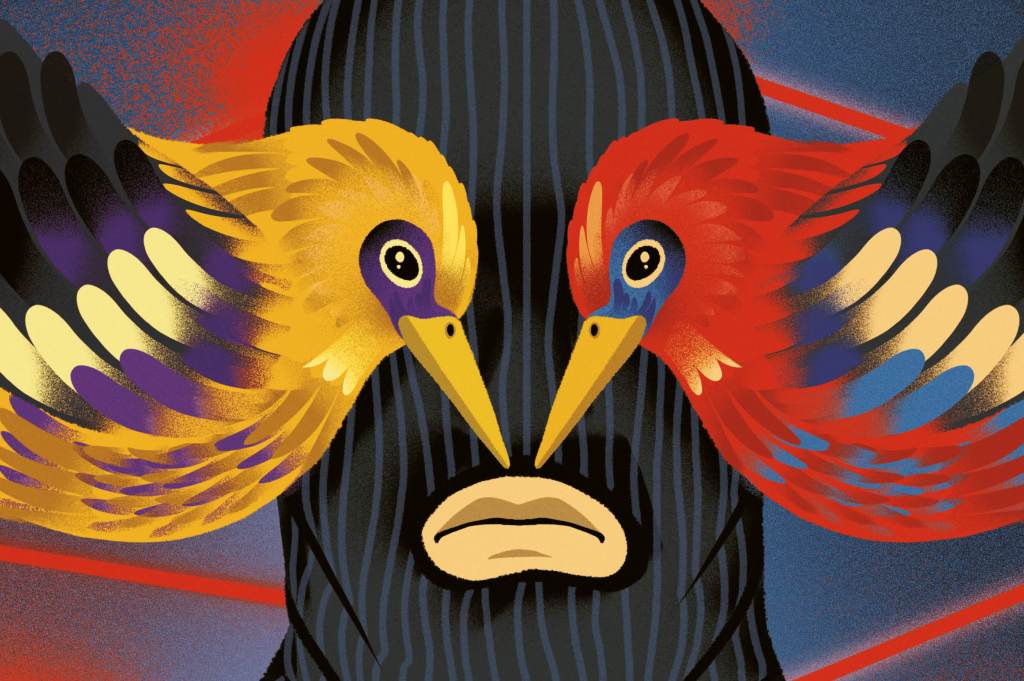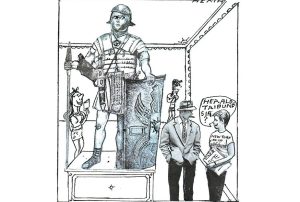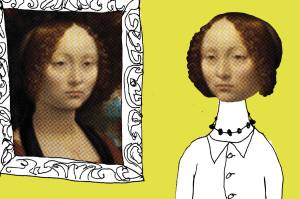The recent events at the British Museum in London will probably prove to be the museum scandal of the year, if not the decade. It was revealed over the summer that hundreds, perhaps thousands, of items had gone missing from its collections in storage, with suspicion directed toward a now-former member of staff. We still don’t know exactly what was stolen, and no one has been formally charged — authorities are still investigating. Nevertheless, the British Museum’s director has stepped down and the press has had a field day generating outrage, albeit with coverage based largely upon speculation and opinion.
Amid all the finger-pointing, however, no one seems to be asking why someone would even consider taking property from a museum in the first place. Author Kirk Wallace Johnson, who investigated a recent scandal involving another British museum, is an exception to this, writing a best-selling book, The Feather Thief, about the American Edwin Rist, who posed as an exotic bird researcher while studying the flute at London’s Royal College of Music in 2009. This gave him access to the Natural History Museum at Tring, which preserves extensive specimens collected by British naturalists such as Alfred Russel Wallace and Charles Darwin.
After a reconnoiter, Rist broke into the museum one evening, and carried off a selection of the rare bird specimens in a suitcase, without being detected. Although the break-in itself was discovered within a few hours, by then Rist was long gone, and given the sheer size of the museum’s collection and the lack of visible damage, identifying what was missing took a considerable amount of time.
Rist intended, at least in part, to use the stolen feathers in the tying of Victorian style fly-fishing lures, an elaborate and painstaking art which he had mastered as a boy, and for which he had become renowned among collectors. However, he eventually chose to sell entire bird skins and individual feathers privately for high prices, to pursue his desire to acquire a gold flute. He was caught and convicted, but — to the surprise of many — only received a suspended sentence: his lawyer successfully argued that his client was a harmless fantasist, not a committed criminal.
“For a lot of people when they first hear about Edwin Rist, the feather thief,” admits Johnson, “their first reaction — and it was my first reaction — is to laugh, and think what a quirky thing it was. But then it quickly brings you to a place where you ask yourself, ‘What is it about us human beings that keeps letting greed win out like this?’ There’s something else going on here.”
Johnson’s book, which will be adapted into a television series, intricately delves into Rist’s psyche, in an attempt to explain why the thief acted the way he did. As Johnson explains, “With people who see no problem with taking property from a museum, they often have such a love and a lust for the things inside the institution, that they feel that they are uniquely capable of appreciating them — more than the average member of the public, and more than researchers, who in their minds are just taking measurements and recording data. And I think that this obsession, this coveting of these objects, gives them a sense of entitlement. That it would be better if these objects were with them, because they feel that only they can truly appreciate them.”
The author describes attempting to put himself in Rist’s mindset, or that of another art thief, as being “a psychological misfire.” “I think there’s an overarching sense among all museum thieves that ‘this belongs to me, not to them.’ The fact that these objects are held in a public trust in a museum makes the moral calculus a little bit easier for them, when it comes to deciding whether to steal one of these things, because they’re not stealing from an individual. They’re not going into some heiress’s home while she’s out at afternoon tea to steal her painting. They’re stealing from this vague thing called ‘an institution.’”
Some might see these thefts as victimless crimes; Johnson observes that at one point Rist blamed the museum for being so poorly defended that some American teenager with a rock could break in and make off with a million dollars’ worth of birds, which he suggested was the fault of the museum for not taking its job seriously enough. Yet museums also have to remain accessible to the public. As Johnson says, “The British Museum and other museums cannot bunker down, even if they had the funding to do so. If a museum becomes Fort Knox, then they’re going against the founding charter of what a museum is supposed to be — a place where things are to be protected as a record for future generations to learn from.”
There is, inevitably, a feeling of embarrassment and shame that emanates from institutions after they have been robbed, as Johnson discovered when the Natural History Museum refused him and a film crew permission to film inside the institution. As he comments, “the museum was still very publicly trying to reject the book and to guard their own reputation, and there’s some point during all of this where I think, ‘Guys, I’m trying here, trying to defend your mission and all,’ but if the museum was truly able to set aside shame and guilt and tackle the task at hand, which was finding out who stole their stuff, I am absolutely certain that they could gotten most of their stuff back. There’s an understanding of the idea that every institution circles the wagons. But how do you take a good faith approach to what just seems like an institution covering its ass?”
It is, Johnson says, easy to condemn a museum after a theft, and the belief that the British Museum heist allegedly involved an employee of the museum has led to a culture of mistrust at all levels, as well as disbelief that someone supposedly loyal to the institution could be capable of such an action. “I’m sad that another British museum is suffering another loss and another embarrassment like this, but if this theft was part of a kind of old boys’ club, of, ‘No, no, we’ll handle this in-house, we’ll take it from here,’ then that whole house needs to be cleaned out. We don’t know yet if that’s true here, but if it is, that’s an egregious lapse.”
Turning back to discuss the question of motive, Johnson points to the desire to pursue elite status within a particular subculture, given that the effort to amass a collection of rare objects of any kind often requires a significant amount of disposable income. “You cannot separate these objects from the idea of status,’” he suggests, “but you also can’t remove the lure of beauty from the situation entirely, either. People aren’t stealing snail collections. They’re stealing beautiful things: things that are obviously aesthetically attractive, for whatever reason.” Yet theft has another, underappreciated drawback. As Johnson comments, “you’re putting the self above everyone else. You’re discounting everyone else’s right to appreciate and learn from the object. And I think that’s a mindset that is increasingly rampant in the world right now.”
What he calls “anti-social arrogance” is at the heart of this dysfunction, says Johnson. “If you say that something belongs in a museum, you’re marveling at the magnificence of that object, whether it’s a piece of art or an antiquity or a specimen, and you’re saying, ‘I want other people to be able to experience what I’ve just experienced.’ The thief, on the other hand, has the exact opposite reaction — especially if he or she is someone who works for a museum and then steals from it.”
We all thrill to a good heist story, a Thomas Crown Affair or Ocean’s Eleven, but The Feather Thief and the recent events at the British Museum not Hollywood fiction. And, as Johnson concludes, there is an especially painful resonance about much-loved institutions being robbed. “It’s because we know that public museums ultimately belong to the public, and so the transgression feels closer to us. Sneaking into a vast repository of human history that is underdefended for many reasons, and doing something permanent to damage it, is a reminder of just how fragile this whole civilization experiment is.”
This article was originally published in The Spectator’s November 2023 World edition.


















